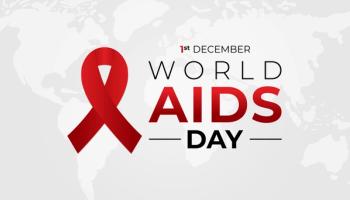
Chris Evanguelidi of Redpoint Global Talks Effective Patient-Engagement Strategies
Briana Contreras, associate editor of Managed Healthcare Executive, speaks with Chris Evanguelidi, head of healthcare at Redpoint Global, for this week's episode of "Tuning In to the C-Suite" podcast. In this conversation, the two discussed the best practices for closing the healthcare experience gap and devising an effective patient engagement strategy through a more patient-centric health system.
To listen to more episodes featured on Tuning Into The C-Suite, visit us on
Below is a brief Q&A from the interview. The text has been edited for clarity.
Q: Can you share what you've noticed currently in the downfalls of patient engagement?
A: If you look at health, our whole health and our healthcare system - first generation, second generation, third generation - generation one was around putting the doctors in the medicine wherever the people are in the United States. Right? Well, now we have medicine and doctors everywhere, we almost have too much, right? What we need to do is switch the focus. We don't need to put it everywhere anymore. We need to make it right for the customer, the patient.
So, this focus moving forward is all about making it right for the for the patient. Well, we have to put them at the center of everything. So if you want to engage somebody, they have to be the center of attention. You have to think, "How do they want to be interacting with everything I built?", "How do I optimize what I built around the patient?" So what ends up happening is you have very good customer experiences between patients and doctors, but the doctors aren't armed with all the analytics on the patient. So they don't know what to say to the patient for engagement. I see a lot of that as a problem.
On the other side, you have the patient that comes in that says, "Hey, I'm here now fix everything that I have here. Tell me what I need to be focused on in the future. And then keep me informed of how I'm doing." If you don't know what's going on with the patient, you can't tell them what to do. It's a vicious cycle. What we do is we unwrap that, right? We unravel it and, and we start saying, "Okay, why don't we put the patient first?", "How do we get there?", "How do we figure out what's going on with the patient?" From an engagement standpoint, we have to tell the doctor more about what's wrong with the patient. So that's where you get population analytics and pop health. And you say, "Okay, these are the care gaps." Then, to activate those care gaps, where the patient wants to consume, you have to touch them. You have to engage them in a way that removes any fear, doubt and uncertainty.
Where the whole industry is behind is on the consumer analytics side. That's where the engagement comes in. So, the fall down is more now on, the consumer that they're not knowing how to adhere to what the doctors know they need to do. So that's really the big fall the big issues right now.
Q: Can you share what you've seen in the healthcare industry? What possibly works best in closing these healthcare experience gaps? Lastly, what do you feel are the best practices in creating a better patient-engagement strategy?
A: We've seen a lot to be quite frank. We have a lot of healthcare clients and we have a solution that's very secure around the data. If you want to know all that's knowable about someone's health, you need all the data on their health. If you want to know all that's knowable on a consumer, you need all the data on the consumer. So from that standpoint, I've seen companies that do a really good job of knowing all this.
We have clients that start with nothing - no database and no way to engage if they did. I also see customers who've gone down the journey. They've been on it for 2, 3, 4 years, always thinking about the customer-centric approach and everything they built. In that scenario, what I can tell you is there's a lot of hope because right now, we have a customer. That is what I say of generation two: they've married the payer with the provider. So now, all of the ways that you pay for the care that needs to be there, is in it together with where you're going to get the care. So essentially, that relationship is incentivized to take care of the patient's health. That's what value based care is. I'm not going to pay you fee for service for $1, I'm going to pay you for improving the patient's health.
So, providers are using the business model taking down the silos and having the same goals around changing the experience for the patient. I'll tell you why. What happens is, let's say the ACA market or individualized plan is for people who are either not working, have a small business, or they are low income, and they need to be able to get assistance to purchase insurance. Well, they also typically are the most unhealthy because they've never had insurance. They couldn't afford to go see the doctor, so instead of going into a bad healthcare experience, they're being sent to the brand new way that new doctors that are only focused on their health. Their first experience right out of the gate with healthcare is positive.
Now, here's the other thing. Some of these people speak English, some speak Spanish, right? So there's doctors who speak English, and they speak Spanish. Some people who speak Spanish prefer to be spoken to in Spanish in one way with certain groups, and they prefer to speak English with other groups. How do you know that? Well, we know that because we have consumer data, they tell us, they interact with us different ways. So this new healthcare company that I'm talking about, they send out language and videos and anything that the patient's language and the way the patient wants to see it. So that's how it starts. And now all of a sudden, you build trust with the patient, you build trust with the consumer. What happens when you build trust with someone, they give you more information, more data about them, right. And so now it's a full circle, all works together, everyone's working together. So that's what I'm seeing work in, in the industry.
Q: On the other spectrum, are patients not engaged because maybe they don't want to be?
A: I would say the answer to that question up until the pandemic was yes. You know, I mean, we had a sick-care market, you get sick, you get care, you get sick, you get care. But when everyone was that risk of getting sick, then everyone needed care, right? And so that little light bulb, that little light bulb, just knocked the dominoes down of something that was already going to happen. And boom. So that's where we are.
But let me expand this for a second. So how do I get evidence of that happening? Well, guess what people are buying wearables, they're doing this, they're becoming more and more concerned about their health, therefore, they're going to get more information about their health. And generation three is a marriage of the provider, the payer, the farmer, with the consumer, bring him his wealth of knowledge about him, right, and dump it in there. And then the doctors get all smarter, and the engagement gets all smarter, the experience gets a lot better. But that's generation three, we're still focused on getting from one to two.
Newsletter
Get the latest industry news, event updates, and more from Managed healthcare Executive.






















































